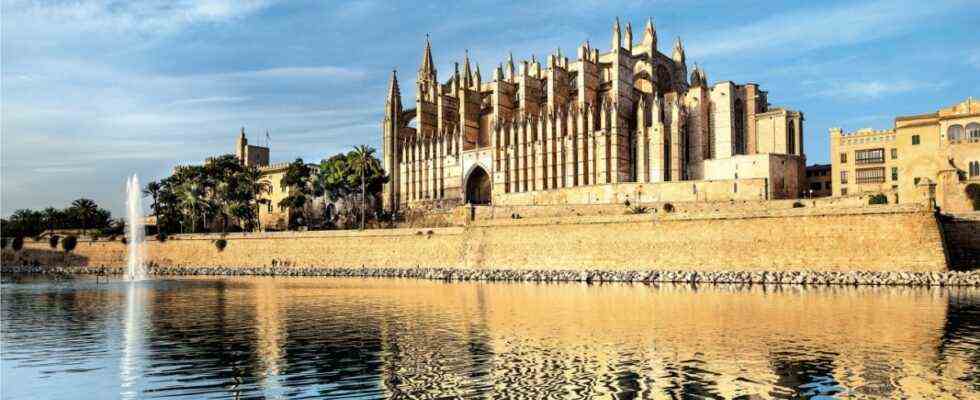It was not just the tourists who invaded and conquered Mallorca and its capital Palma. The history of this city, as Stefan Loiperdinger makes clear at the beginning of his visually powerful book “Palma”, is marked by feuds and wars, sieges and attacks. This can still be seen in the present day in many ways from the architecture.
The most lasting impact of such a conquest is the last and only non-warlike one, namely the tourist one, judges Loiperdinger – and proves his assessment through his photos and explanations. The photographer, graphic designer and author lives partly on Mallorca. He has already published a book about the island and also publishes the magazine “Mallorca’s most beautiful pages”. Now follows an illustrated book about the capital.
Loiperdinger begins his forays on the Passeo del Borne, one of the central promenade and, above all, shopping streets, where the influences of tourism are clearly evident. “Even if there are still a few long-established stores, it is now the flagship stores of global fashion labels that attract an international and well-funded clientele,” says Loiperdinger. A development that he does not criticize per se. Because it is connected with investments in the building fabric and helps the island to counteract party tourism.
Carrer Sant Jaume in the center of Palma has always been the residential and business location of the wealthy.
(Photo: Stefan Loiperdinger)
The art galleries benefit from high quality tourism
You can see from the photographs that it is often possible to integrate the shops for luxury goods and the boutique hotels discreetly into the historical architecture – there are no large billboards, no trimmings on the facades. Rather, these companies make use of the nobility of the buildings for their own purposes.
A large chapter is devoted to the Palma gallery scene, one of the most relevant in Spain. According to Frederic Pinya, who runs the Pelaires Gallery in the second generation, it is inconceivable “without high-quality tourism”. At the same time, the art scene is in turn a prerequisite for this tourism. The desired guests would only come if they could find suitable hotels, restaurants and shops.
In the coming year, the La Pajarita confectionery business will be 150 years old – archbishops were also among the customers.
(Photo: Stefan Loiperdinger)
The book shows the face of the city: the sacred architecture, the buildings of the monarchy, the city palaces of the rich bourgeoisie. Loiperdinger is also looking for something special and aesthetically pleasing in the simpler districts. Even in a neighborhood like Sa Gerreria that is not spruced up, with its simple pubs, tattoo shops, graffiti on the facades and traditional shops that are not primarily aimed at international customers.
And at the very end he turned his back on Palma, turned his gaze out to sea, to the ports, to contemporary architecture that no longer had the purpose of protecting the city from intruders. It designed the transition from the water to the mainland. For Stefan Loiperdinger, Palma is the real reason to visit Mallorca.
Stefan Loiperdinger: Palma. Travel Publishing, Grünwald 2021. 320 pages, 78 euros.

